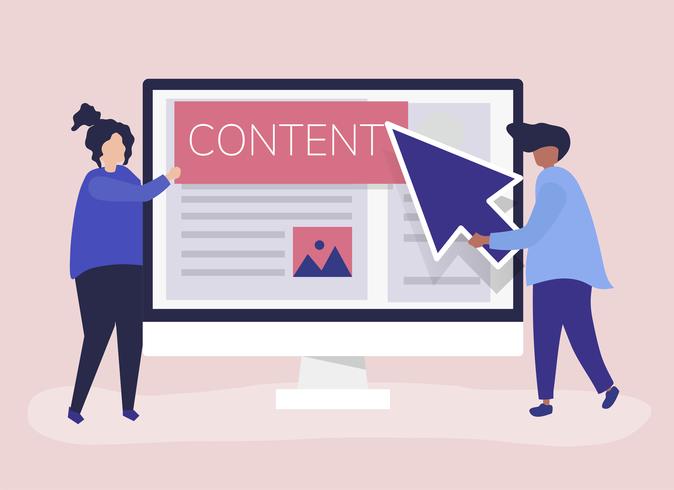The Ultimate Guide to Writing Compelling Copy for Your Website Pages
Let me tell you a secret: 7 seconds create an impression. You heard it right; it takes 7 seconds to create an impression on the site, so if you want the audience to stay on the site and get impressed, creating brand success online, you must be a pioneer in writing interesting copy for your website pages.
Let me simplify the process for you in this article. Most effective websites follow a rule of thumb emphasizing human-centric interaction, making the audience feel that the conversation is not with machines. The starting lines are the targeting lines that significantly impact the site’s success points.
What is Web copy?
This usually refers to the website text we use to sell products or services; these texts guide the audience through a quick tour of the product details. Web copy may include website pages, about website pages, FAQs, services, etc. We all learned algebra in school, and THE LEFT-HAND SIDE SHOULD ALWAYS BE EQUAL TO THE RIGHT-HAND SIDE, as web copy should match the audience’s search intent.
Tips you should miss at your own risk
# Scannable copy
People are the ones who judge us, so the layout we choose should impress them, as it should not be clumsy and not include chunky patterns. Instead, it should contain brief paragraphs, bullets, and headings that are skimmable by people.
#The purpose of the content
Any business must understand its purpose. Therefore, always keep it simple and straight. The readers are confused because of a pressurized question, and your ultimate goal is to simplify it as possible for them. Therefore, the information should be short, followed, and simple to get readers to reach the end of the page. Beauty lies in simplicity, so make the page as beautiful as possible. Avoid dumb questions and piles of information in the description.
# Define the target audience.
Your copy should always fit your target audience, and we should always prioritize the target audience before creating a copy. Invest time analyzing the audience and keep an eye on competitors’ targets. Be updated on trends by conducting surveys and anal’ trends by conducting surveys and analyzing the results. Once you’ve completed your background research, you’ll know exactly who your target audience is.
# Utilize SEO in your copy.
No matter how well you perform in copy, if it doesn’t appear in Google’s page ranking, you can’t expect the result you’re waiting for. To make people find you, you should find the right SEO strategy and target keywords that boost the website’s ranking in search engines. This will give it visibility to the audience. Use Google Trends to simplify the work. Structure the content.
The content should not appeal like a mountain of information or a mass of information; it should always be appealing, structured, and organized to ease the audience’s reading.
Divide the data into brief passages; use headlines, subheadings, and pointers.
Be sure about proofreading and plagiarism. Minute details matter, whether it’s punctuation, spelling, or capitalization; always double-check it, check your readability score online, improve it, and read it again before publishing.
# Grab the reader’s attention from the first line.
As we mentioned above, we have just 7 seconds to capture the reader’s interest, and those 7 seconds decide whether the reader stays or leaves. So the opening line should be catchy, eye-catching, and turn the reader’s interest, and those 7 seconds decide whether the reader stays or leaves. The opening line should be catchy, eye-catching, creative, and out-of-the-box.
#Maintaining a friendly conversation
A friendly conversation doesn’t make the reader feel like he is reading a book; for the content to be conveyed, we should use active voices rather than passive ones, directly addressing the audience as if we were talking directly to them. Always prefer a layperson’s language and keep grade level at 8. The simpler the language, the more reliable it is and the more viewers it attracts. Carefully use adverbs and adjectives. Explain with an example; use review content for an explanation.
#Hit the bull’s eye with visuals.
Humans’ spatial memory is stronger than their readable memory, so they use it properly.
People always need food and content, so always refresh content and update it on time.
# Conclusion
Effective website copy is all about building a bond with your audience by understanding their minds. Therefore, we use action-oriented language and create an interesting copy with an article that drives conversion and engages your audience.
# Here are some frequently asked questions about writing interesting website copy:
What is a website copy?
Website copy is the written content on your website that communicates your message to your audience. Website copy engages your audience, builds trust, and drives conversions.
How do I write effective website copy?
To write effective website copy, you must understand your target audience, use benefit-focused and action-oriented language, and use visuals to engage and inform. You should also optimize your copy for SEO and test and refine your content over time.
What should I include in my website copy?
- A clear value proposition.
- Generate an interesting headline.
- Information about your products or services.
- A call to action.
To build trust with your audience, you should also include social proof, such as customer testimonials or case studies.
How long should my website copy be?
The length of your website copy depends on the purpose of your page and your audience’s needs. In general, keep your copy concise and to the point. However, a longer copy may be necessary for pages that require more detail, such as product pages or blog posts.
Where to get such services?
Reach us today! Get quote from the leading Content Marketing Agency.
